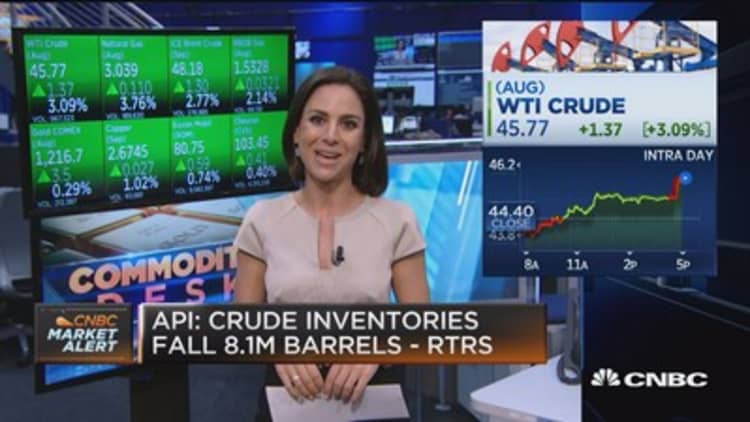The U.S. Energy Information Administration on Tuesday cut its outlook for oil prices and trimmed its forecast for how much oil U.S. drillers will pump next year.
EIA now sees U.S. West Texas Intermediate crude averaging $48.95 this year, down from last month's forecast for $50.78. The agency also tempered its outlook for 2018, knocking its WTI forecast down to $49.58 from $53.61.
The price cut follows a series of downward revisions to oil prices by investment banks.
The expectation for lower prices will drag on U.S. oil production in 2018, according to EIA. Last month, EIA forecast U.S. drillers would produce 10 million barrels a day in 2018. On Tuesday, it said the nation would pump 9.9 million barrels a day — still the highest annual average output on record.
"A lower forecast for crude oil prices is expected to shave a little off projected growth in U.S. oil production next year compared with the previous forecast, but annual output is still on track to reach a record high in 2018," U.S. EIA acting administrator Howard Gruenspecht said in a statement.

"A revised oil price forecast that is $2 to $4 per barrel lower for late 2017 and during 2018 than the prior forecast will make it less profitable for some U.S. producers to drill for oil," he said.
American oil and gas companies have improved drilling methods and focused on their best wells in order to operate in a tough price environment. But lower oil prices limit their ability to hedge their production, which involves using financial instruments to lock in a price for future delivery.
While drillers may lament lower oil prices, consumers will continue to get a break at the pump. American drivers will pay an average $2.38 a gallon at the pump this summer driving season, according to EIA. That's 15 cents higher than last year, but lower than previously forecast.
The EIA expects demand for petroleum and other liquids to rise by 360,000 barrels a day, or 1.8 percent, next year.
Watch: Crude turns positive



